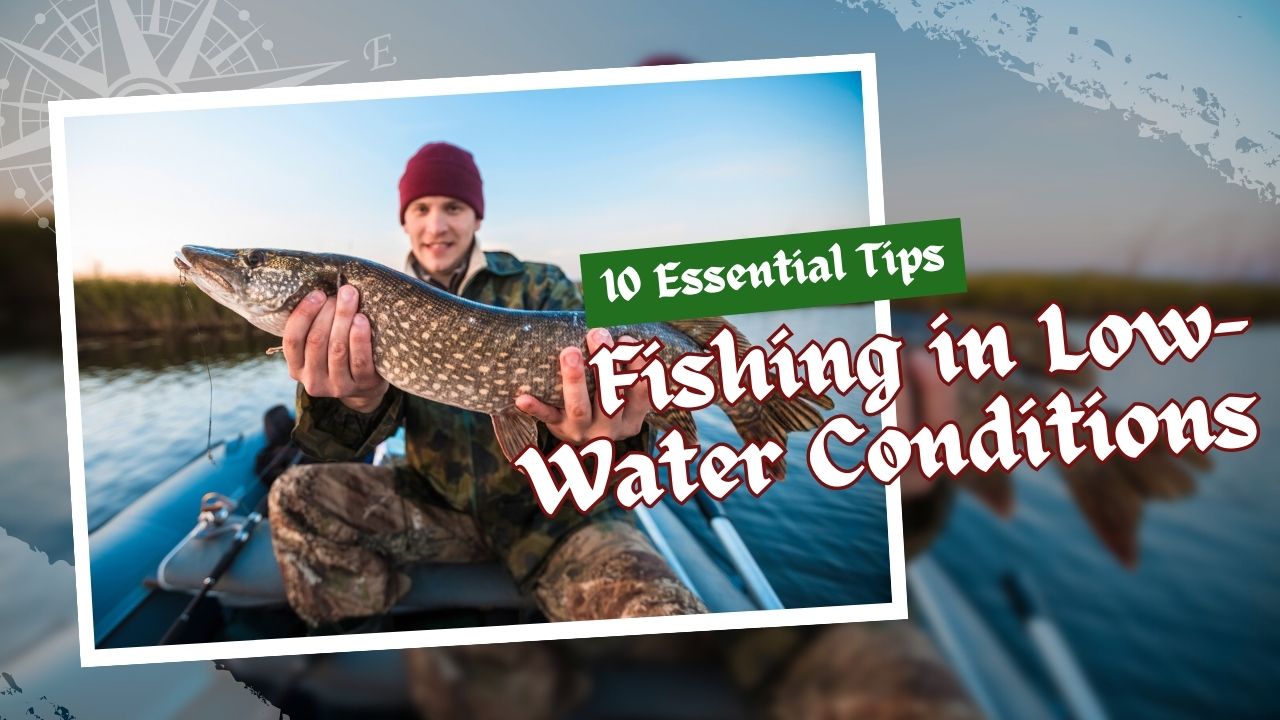Fishing is a beloved outdoor activity that brings joy to countless anglers around the world. However, as any experienced angler knows, the conditions on the water can change dramatically, presenting various challenges. Low-water conditions, in particular, can be tricky to navigate, as they impact fish behavior and movement. For bank fishermen, understanding how to adapt to these conditions is crucial for a successful fishing trip.
In this article, we’ll explore five essential tips to help you master bank fishing in low-water conditions and increase your chances of landing a prize catch.

1. Scout for the Right Spots
When the water levels are low, fish tend to seek shelter in deeper pockets and areas with more cover. As a bank fisherman, scouting the right fishing spots becomes even more critical. Before heading out, do some research on your chosen fishing location to identify potential deep pools, submerged structures, or underwater vegetation. These spots act as refuge areas for fish during low-water conditions, making them prime fishing locations. Additionally, pay attention to any inflows or outflows, as they can attract fish seeking oxygen-rich water and an easy meal.

Scout for the Right Spots
2. Downsize Your Gear
In low-water conditions, fish tend to become more cautious and skittish. To increase your chances of a successful catch, consider downsizing your gear. Opt for lighter fishing rods and reels, thinner lines, and smaller hooks and baits. Lighter gear allows you to cast more accurately and presents a more natural-looking bait to the fish. Moreover, it enhances sensitivity, making it easier to detect subtle bites in these challenging conditions.
3. Adjust Your Approach
Adapting your fishing approach to low-water conditions is key to luring in the fish. During this time, fish are likely to be more concentrated in smaller areas, so practice stealth and patience. Avoid making loud noises or sudden movements that could scare them away. Additionally, slow down your retrieval speed, as fish may be less inclined to chase after fast-moving lures. Instead, opt for slow and steady retrieves to entice them effectively.
4. Use Natural-Looking Baits
In low-water conditions, fish are more cautious about what they bite. Using natural-looking baits that mimic their natural prey can significantly increase your success rate. Live baits such as worms, minnows, or insects work great in these situations. If you prefer artificial baits, opt for those with lifelike colors and movements that imitate the local forage. Remember, the goal is to present a convincing meal to the fish, enticing them to strike.

Use Natural-Looking Baits
5. Be Mindful of the Environment
During low-water conditions, bodies of water can become more vulnerable to environmental stress. To ensure the sustainability of the fish population and the ecosystem, be mindful of your impact. Practice catch-and-release whenever possible, especially with endangered or protected species. Moreover, properly dispose of any trash or fishing gear to prevent pollution and harm to wildlife.
6. Stay Informed About Water Levels
In low-water conditions, water levels can fluctuate more frequently than usual due to factors such as weather patterns and human water management. As a bank angler, it’s essential to stay informed about the current water levels before planning your fishing trip. Many government agencies and fishing websites provide real-time data on water levels, so make use of these resources. By staying updated, you can better anticipate the fish’s behavior and plan your fishing strategy accordingly.
7. Fish Early in the Morning or Late in the Evening
During low-water conditions, fish often become more active during specific times of the day when the water is cooler and there’s less human activity. Consider fishing early in the morning or late in the evening, as these periods are known for increased fish activity. In the early morning, the water temperature is generally lower, and fish tend to be more willing to feed. During the evening, as the sun sets, predatory fish become more active, seeking prey under the cover of darkness.
8. Pay Attention to the Weather
Weather conditions play a significant role in fish behavior, regardless of the water level. When fishing in low-water conditions, pay close attention to the weather forecast. Sudden weather changes, such as approaching storms or heavy rain, can impact fish movement and feeding patterns. Fish are likely to become more active just before a storm front, and you might experience a spike in activity during these periods. However, it’s crucial to prioritize safety and avoid fishing in severe weather conditions.
9. Explore Unconventional Fishing Spots
Low-water conditions can open up new opportunities for bank anglers to explore areas that are typically submerged under higher water levels. Look for hidden coves, backwaters, or shallow areas that are now accessible. These less-frequented spots might harbor fish that are less pressured by other anglers. Be adventurous and willing to explore off the beaten path to discover hidden fishing gems.
10. Practice Proper Fish Handling
When you do land a fish, practice proper fish handling techniques to ensure the fish’s survival upon release. In low-water conditions, the water may be warmer, and fish may already be stressed due to reduced habitat and oxygen levels. Minimize handling time, wet your hands before touching the fish, and support the fish gently when lifting it for a photo or to remove the hook. A quick and gentle release gives the fish the best chance of survival, contributing to the sustainability of the fish population in the long run.
Final Thoughts
Bank fishing in low-water conditions requires adaptability, patience, and a keen understanding of fish behavior. By staying informed about water levels, using natural-looking baits, adjusting your fishing approach, and being mindful of the environment, you can increase your chances of success. Additionally, explore unconventional fishing spots and pay attention to weather patterns to capitalize on the fish’s activity. Remember, fishing is not just about catching fish; it’s about connecting with nature and enjoying the outdoors responsibly. Embrace the challenges and rewards that low-water conditions offer, and your bank fishing adventures will be truly unforgettable. Tight lines!
